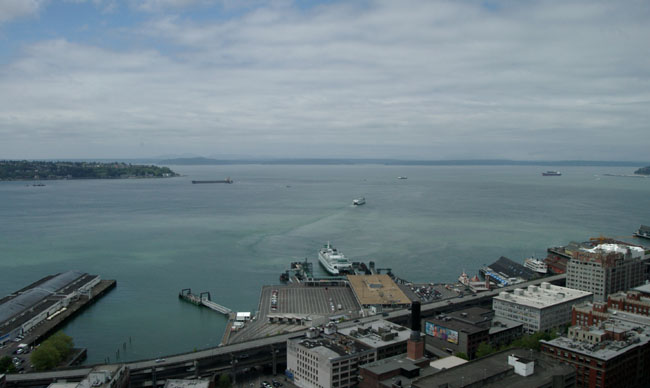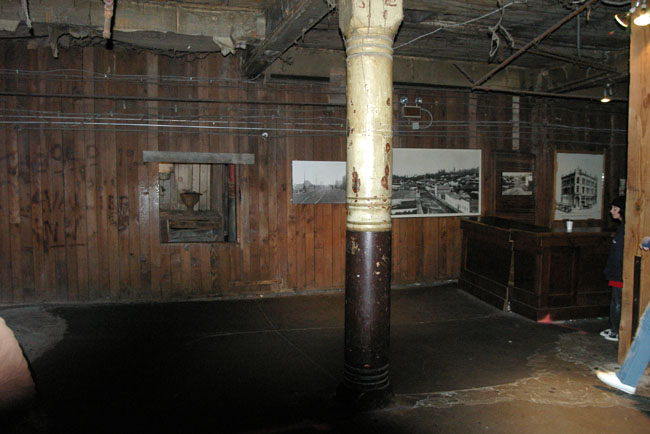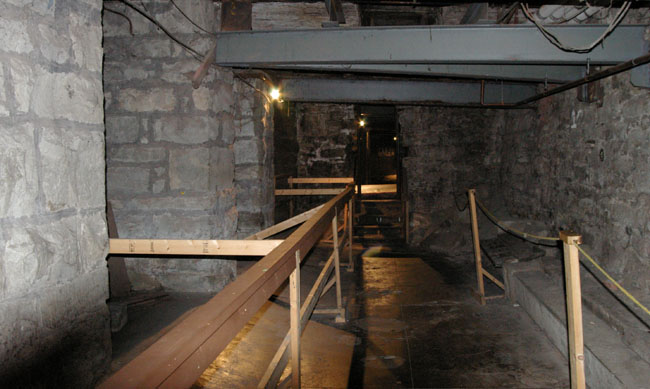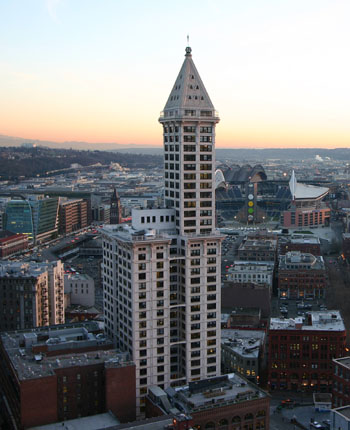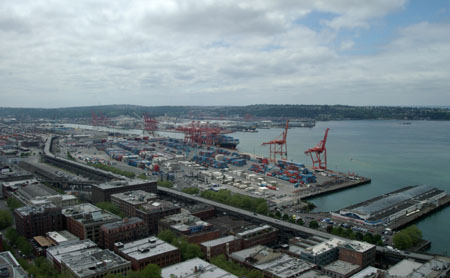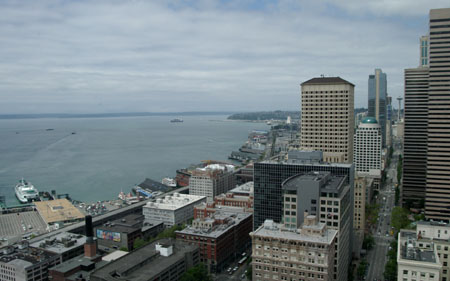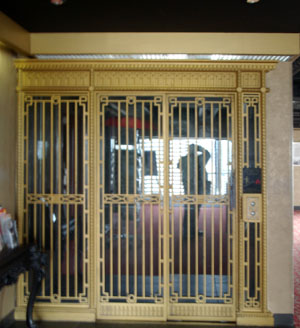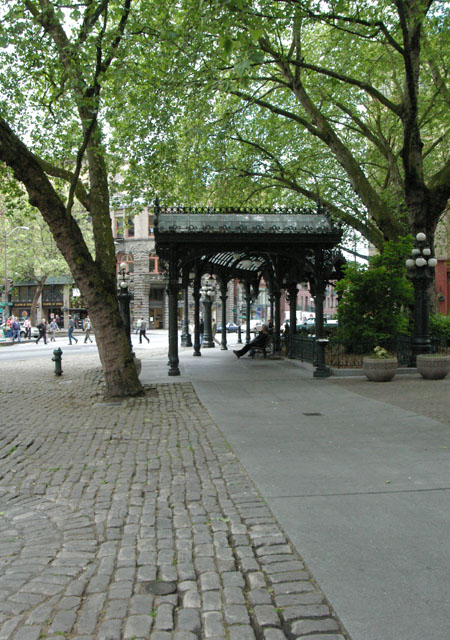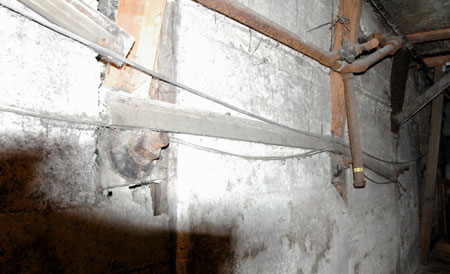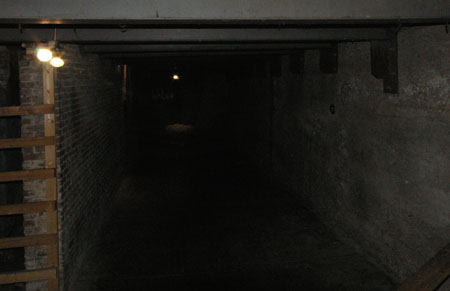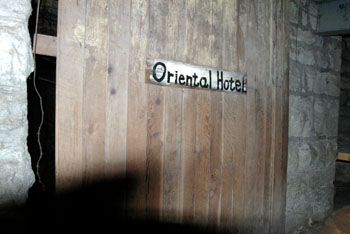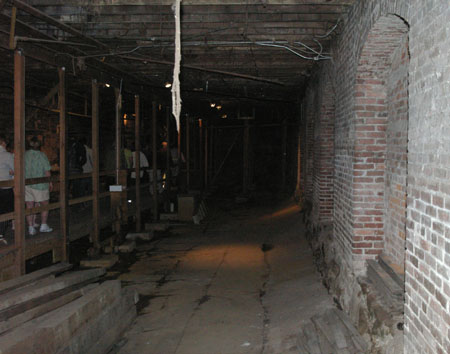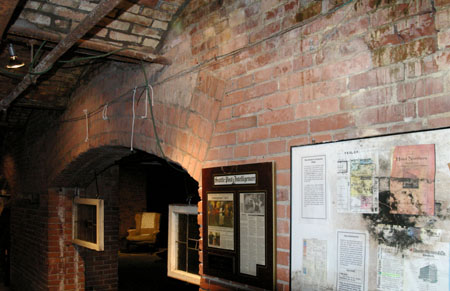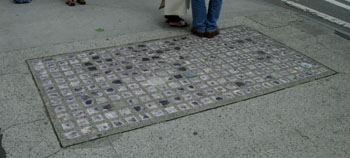|
The Seattle Underground is a network of underground passageways and basements that were originally at ground level. When Seattle was rebuilt after the 1889 fire it was decided to raise the streets one to two stories higher than the original ground level. In order to achieve this the streets were lined with concrete walls that formed narrow alleyways between the walls and the buildings on both sides of the street, with a wide "alley" where the street was. Soil from the hillsides was used to raise the streets to the desired new level, generally this was 12 feet higher than before but in some places it was nearly 30 feet higher.
Unbelievably pedestrians initially climbed ladders to go between street level and the sidewalks in front of the buildings (death through falling from street to sidewalk level - especially after the saloons closed - apparently was common). Eventually the sidewalks were raised (frequently by building brick archways) to the new street level and the originals were submerged. To illuminate these now underground areas skylights with small panes of clear glass were installed.
In 1907 the city condemned the Underground for fear of bubonic plague, as a result the basements were left to deteriorate or were used as storage. Some became illegal flophouses for the homeless, gambling halls, speakeasies, and opium dens.
A part of these underground walkways have been reopened for tours, the company running these tours has a web site here.
This was one of the first areas the tour took in, it was fairly large and looked like it might have been an underground saloon at one time.
|

